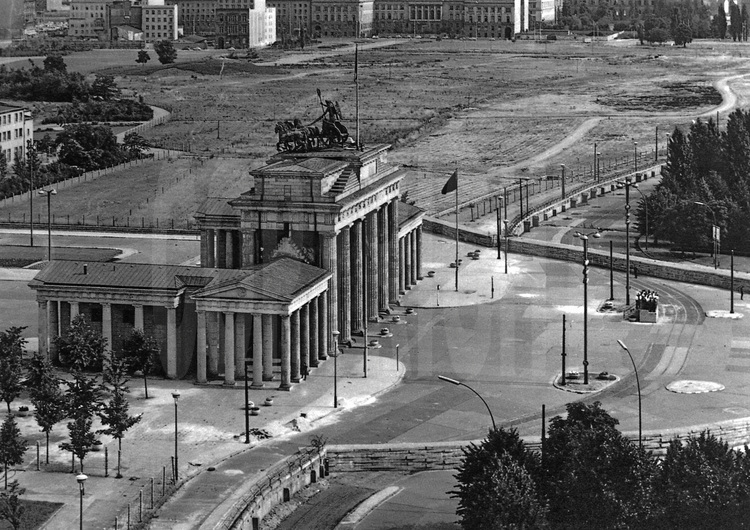|
|
|
|

|
|
© Stéphane Compoint
|
|
Brandenburg Gate and Pariser Platz. During the division of Germany and Berlin, the Brandenburg Gate, old door and emblem of the city, was in the Soviet sector. Pariser Platz was part of No Man's Land and was not publicly available. World War II had transformed the center of political and cultural life flourished in urban wasteland. The rubble of bombed buildings were not demolished and removed that, over time and its redevelopment were never intended. During the famous night of August 13, 1961, Pariser Platz was invaded by light armored vehicles and anti-police protest equipped with water cannons. Members of workers' militias formed a tight cordon in front of the Brandenburg Gate, preventing the passage of their fellow citizens in West Berlin. In the months that followed, the provisional demarcation barriers were replaced by a background wall, an exterior wall, electrical towers and watchtowers. Front of the Brandenburg Gate, the wall was three meters thick, making it also an anti-tank barrier. Strengthening of the border has encapsulated the Pariser Platz in No Man's Land. Again, the old route of the wall is now materialized on the ground by a double row of cobblestones. Konrad Adenauer, John F. Kennedy ("we are all in Berlin!"), Michael Gorbatschev, Ronald Reagan, and many other official dignitaries from the East and West visited the Berlin Wall there. On 22 December 1989, six weeks after the Wall fell, the GDR authorities opened a border crossing further to the Pariser Platz, releasing new access and passage through the Brandenburg Gate.
|
|
|
|
|

